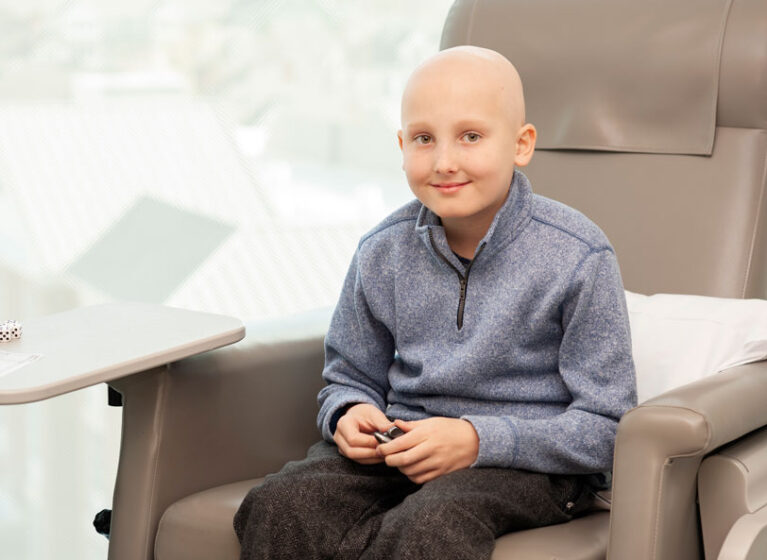
UVA Health Children’s cancer researchers are developing a less toxic, more effective treatment for hard-to-treat types of leukemia that targets a specific protein driver of the disease rather than targeting all fast-growing cells.
This innovative work, led by John Bushweller, PhD, received a $250,000 grant from the Children’s Cancer Research Fund in May 2023.
Bushweller, professor of Molecular Physiology and Biological Physics at the UVA School of Medicine, and his team discovered that blocking the actions of an abnormal protein that drives the cancer has the potential to vastly improve outcomes for patients. The grant will fund ongoing research to create more potent small-molecule protein inhibitors, Bushweller says.
The Long Path to Drug Development
The fusion of the protein MLL to other partners, including AF9, to make the MLL-AF9 fusion protein (and others) has been shown to be a driver of leukemia, causing acute myeloid leukemia (AML) or acute lymphocytic leukemia (ALL). These cancers have a poor prognosis and affect about 10 percent of patients with leukemia.
“The good sign is that there’s been a lot of positive developments in this area recently,” Bushweller says.
Driven to understand how the proteins drive leukemia, Bushweller studied how the MLL-AF9 fusion protein functions. MLL-AF9 is a chimera — the combination of two proteins normally not linked together — called a fusion protein.
“We looked at different regions of the protein, called domains, to see if we could understand the importance of certain functions,” Bushweller says.
One of those regions is the CXXC domain. This section only binds with DNA when it is not methylated. The cell can put a marker on the DNA to turn the gene off, preventing the protein from binding.
Once the team determined this, they investigated how the CXXC domain drives acute myeloid leukemia or acute lymphocytic leukemia. They studied the protein’s molecular structure to learn how and where it binds to DNA.
They created point mutations in the protein to disrupt DNA binding. Then they tested those mutations to see the impact on disease in culture experiments and mouse models.
“When we disrupted DNA binding, we completely eliminated the ability of the protein to drive leukemia,” Bushweller says. “The mice were unaffected. That’s a really robust signal.”
The team then began creating small molecule inhibitors to target the domain and prevent DNA binding. Bushweller developed a first class of molecules that inhibits the protein-DNA interaction.
Launching From Early-Stage Research to the Next Level
Bushweller will use the support from the Children’s Cancer Research Fund to develop and test more potent small molecule derivatives that can be tested in mouse models.
Eventually, he hopes to move toward clinical deployment.
The studies are considered early stage right now. Bushweller believes what he accomplishes with the Children’s Cancer Research Fund grant will help him secure funding from the National Institutes of Health.
His team is working to make changes to the small molecule compound to help it form a stronger bond with the MLL-AF9 protein. They are testing many options.
They also are exploring the potential of a new paradigm in pharmacology that uses PROTAC molecules to degrade proteins. A PROTAC molecule may be able to target the MLL-AF9 protein for the cell to destroy it.
Targeting Fusion Proteins: “Best Therapeutic Approach”
Treatments that turn off a specific protein could eventually replace traditional cancer therapy protocols, which kill all rapidly growing cells and have limited selectivity.
This would be a less toxic option because “we’re not just killing anything that grows fast,” Bushweller says. “We’re damaging only cells that are dependent on this particular protein.”
The guiding light for Bushweller’s work is the chance to improve care for patients.
“To do that requires a lot of basic science, and it’s a long process,” Bushweller says.
However, developing treatments that target fusion proteins could potentially impact many children’s cancers. Bushweller and his team also are doing similar work related to Ewing’s sarcoma.
“Targeting the fusion protein that drives these diseases is the best therapeutic approach,” Bushweller says. “These cancers are driven predominantly, if not completely, by one fusion protein that really messes up the cell.”